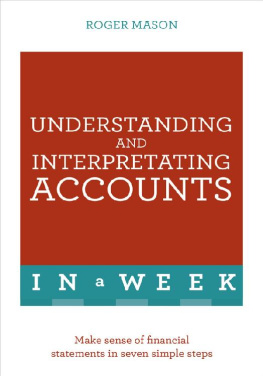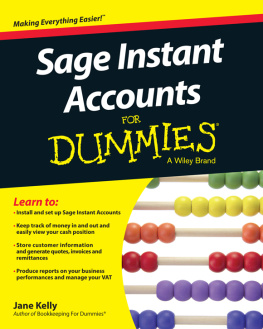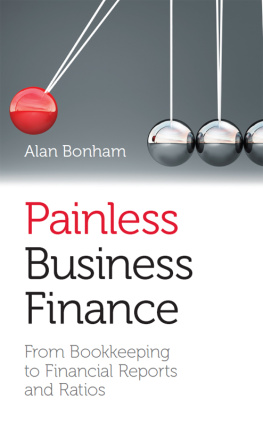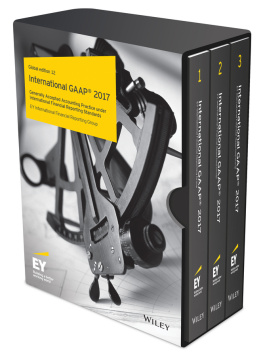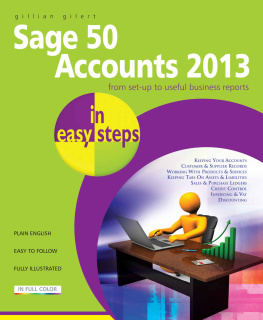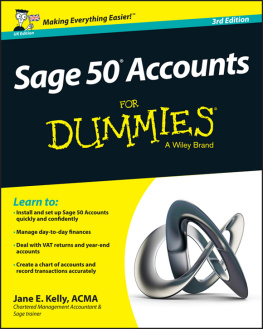Understanding and Interpreting Accounts
In A Week
Roger Mason
Roger Mason is a Chartered Certified Accountant with many years practical experience as a Finance Director at a number of global companies. He now lectures on financial and business topics. In addition, he has edited a financial publication and written many books.
Contents
Introduction
There has never been a time when managers, and indeed people in general, were more exposed to a multitude of financial statements than they are today. To take just one example, millions of people are investors, perhaps indirectly, and are sent accounts and financial information relating to the companies in which they invest. Even non-financial managers are often involved in budgeting and regular financial reporting. They are expected to understand the accounts put in front of them and to contribute to the analysis and interpretation of the figures.
It is important that managers understand the principles of analysing and interpreting accounts. They will then be able to deal with such questions as:
Is our customer in trouble? Are we going to be paid?
Profits are down why exactly?
Just what is gearing? And does it matter?
This book is written for managers wishing to answer these questions. By setting aside a little time each day for a week, you will greatly increase your understanding of accounts and how to interpret them.
This book has been written with reference to the law of the United Kingdom, and with reference to UK accounting standards and international accounting standards. Laws vary from country to country. Most but not all of the world uses international accounting standards. This book should be useful to all readers, but these differences should be kept in mind.
It will be a great help if you get hold of a set of accounts and examine them as explained in this book. It is likely to be more meaningful if the accounts are for a company that you know well, such as your employer. It is not difficult to obtain accounts and on Monday it is explained how this can be done.
The book contains 70 end-of-chapter questions, each with four possible answers. The correct answers are given at the end of the book. I do hope that you attempt them. If you get 60 correct, that is a good score anything higher is exceptional.
I have enjoyed writing this book and I hope that you enjoy reading it, or at the very least find it useful. My best wishes for your future success.
Roger Mason
During the rest of the week we will be examining in detail various aspects of accounts. We will see how everything fits together and hopefully understand the bigger picture. We will aim to know what everything means and how to interpret the information. It is quite a challenge and we will get the best results if we approach it in the right way. Furthermore, we need to know about the many problems and traps that await us. So we will spend today preparing for what lies ahead. Our time will not be wasted.
The various aspects that we examine comprise:
The approaches most likely to get the best results
Look for trends
Look for reasons
Be open-minded
Make comparisons
Do not neglect the notes and the accounting policies
Sometimes be suspicious
Traps to avoid
Applying percentages to small base figures
Failure to take account of a change in accounting policy
Not always comparing like with like
Forgetting that some things can only be known by insiders
Not taking account of different lengths in the trading period
Forgetting the effects of inflation
Not taking account of seasonal factors
Being misled by averages
Not realizing that the figures have been manipulated
Failure to take full account of the notes and other information
The approaches most likely to get the best results
The right attitudes are some of those most likely to be displayed by a successful businessman or businesswoman, or indeed by persons successful in many other fields. You are advised to prepare yourself and give the job the necessary time and resources. You should be knowledgeable and cool, calm and collected. It is necessary to be determined and sometimes to be sceptical. At times you must be relentless. The following techniques and attitudes may be particularly helpful.
Look for trends
It is often very useful to examine trends because they may be much more revealing than a single figure or comparison. If you only have one years accounts or accounts for some other single period, this will not be possible. However, at least for an established business, you will often have the figures for several periods. In the UK, companies are required to publish the figures for the previous period alongside the figures for the current period, so you will always have at least two figures or ratios to compare. The published accounts of UK listed companies are required to give key data over the previous five years.
A deteriorating payment performance, for example, often indicates liquidity problems, although it can also mean that selfish managers are hoarding cash at the expense of suppliers. If a company has gone from paying in 30 days to paying in 90 days, it may be more worrying than if it has consistently taken 90 days to pay.
Look for reasons
There may be special reasons that should be taken into account when the significance of a ratio is assessed. For example, very high expenditure on advertising right at the end of the financial period may reduce profits for the period, but hold out the promise of higher sales and profits in the next period. Of course, the extra sales and profits might not actually happen. Lord Leverhulme, the founder of Unilever, famously remarked that he knew that half of his companys massive expenditure on advertising was wasted, but he did not know which half.
Be open-minded
You will often approach the task of interpreting accounts with some preconceived ideas about what you will find and what your conclusions will be. This is inevitable and often your preconceived ideas will be correct, but you should never close your mind to the possibility that you will be wrong. Always look at the evidence and make up your mind accordingly.
Make comparisons
A close examination of a set of accounts will give you much information and it might tell you what you want to know. For example, you may be particularly interested in the ratio between net profit and turnover, which is one of the easier calculations to make. If this really is all that you want you can stop at this point, but it will very probably be revealing to compare the ratio that you have obtained with such things as:
Last years results
The budget
The industry or sector average
The accounts of a competitor
An apparently successful result might not look so good if it lags behind the competition, the budget and last years figures. The opposite of course also applies.
Do not neglect the notes and the accounting policies
The figures in the financial statements are the starting point, but only the starting point. A full understanding requires a close study of the notes and the accounting policies. This really does matter.

